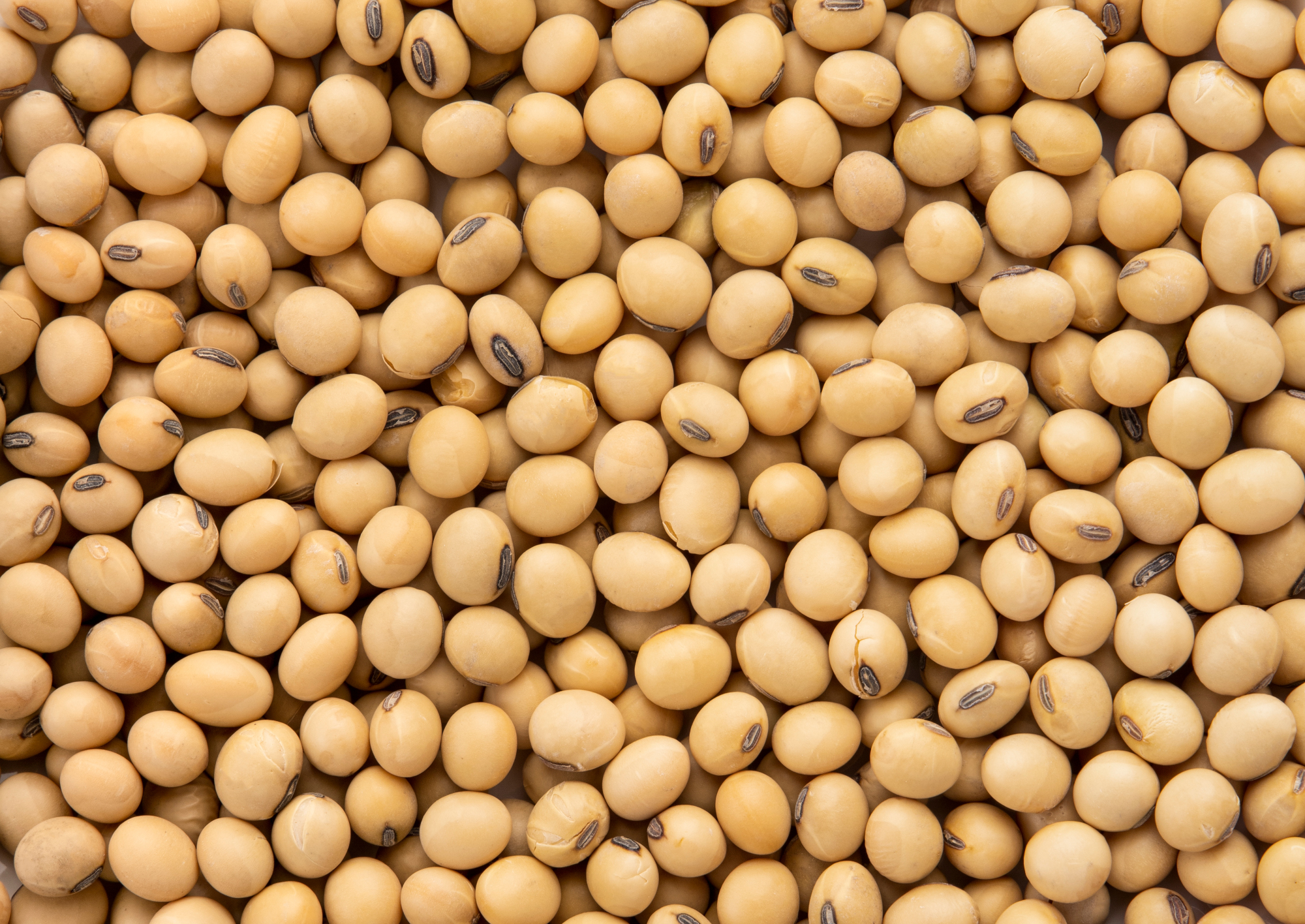About Amino Acids
U.S. soybean farmers have redefined the measure of feed ingredient quality and value based on content of essential amino acids (EAAs).
When dietary protein is digested through feed, it supplies available amino acids that are absorbed and utilized for maintenance, growth, and lactation. There are 20 naturally occurring amino acids in feeds and animal tissues. In monogastric animals like poultry and swine, 9 amino acids are considered to be dietary essential, as animals cannot synthesize them in sufficient quantities to support growth .
Other amino acids, like arginine and proline, are considered semi-essential or conditionally essential, because in rapidly growing animals such as recently weaned piglets, the animals may not be able to synthesize sufficient amounts and a dietary supply is required while older animals may not require a dietary supply1. The remaining amino acids which can be synthesized by the animal from precursors are considered dietary non-essentials1.
For optimal growth, swine and poultry diets are formulated to have a balanced amino acid profile, where sufficient essential amino acids are supplied to meet individual amino acid nutritional requirements, sufficient non-essential amino acids are supplied to meet the requirement for total nitrogen, and no imbalance exists among the amino acids to avoid potential antagonisms. Although the non-essential amino acids are not dietary requirements, it doesn’t mean they’re not important. A good example is cysteine. It is a non-essential amino acid, as it can be synthesized from methionine, but this requires more dietary methionine. Accordingly, nutritionists say that providing cysteine “spares” methionine in the ration.
Because corn is a large part of swine and poultry diets, other ingredients are needed to balance its relatively low concentrations of crude protein, methionine and lysine. Soybean meal is a very desirable feed ingredient used to achieve proper amino acid balances in monogastric diets as it complements the amino acid profile in corn and other grains. In commercial swine and poultry diets, the first four essential amino acids that are limiting are methionine, lysine, threonine and tryptophan. Because cysteine can spare methionine, it is included as a critical amino acid in formulation. Protein quality of soybean meal is determined by its crude protein content, digestibility of the individual amino acids and amino acid profile. Variation exists in all three quality components and should be considered for ingredient purchasing and ration formulation.
Dietary essential, semi-essential and non-essential AAs. Adapted from NRC Swine 2012. In poultry, arginine is considered an essential amino acid.
| Essential | Semi-essential | Non-essential |
|---|---|---|
| Methionine | Cysteine | Alanine |
| Lysine | Arginine | Aspartate |
| Threonine | Proline | Asparagine |
| Tryptophan | Tyrosine | Glutamate |
| Leucine | Glutamine | Glycine |
| Isoleucine | Serine | |
| Valine | ||
| Phenylalanine | ||
| Histidine |
Sources: NRC Swine 2012, NRC Poultry 1994
EAA vs. Crude Protein
Crude Protein is a common metric for evaluating and buying soybean meal (SBM). Oftentimes a buyer wants to purchase based on the lowest price of CP per metric ton. Is this the best way to make a purchasing decision? Or are other factors at play that change the value equation?
Let’s take a look at an example.
Soybean Meal Proximate Analysis RAS 2021
| Name | Arg SBM 2022 | BRA SBM 2022 | USA SBM 2022 |
|---|---|---|---|
| Dry Matter | 89.10 | 89.90 | 88.00 |
| Crude Protein | 46.10 | 47.30 | 46.00 |
| AME | 2,067.53 | 2,013.56 | 2,115.00 |
| Crude Fat | 0.86 | 1.27 | 1.39 |
| Crude Fibre | 3.38 | 4.52 | 3.86 |
| Ash | 6.54 | 6.29 | 6.54 |
| Sucrose | 8.54 | 7.48 | 8.79 |
| Starch | 1.00 | 1.00 | 1.00 |
Here we have three SBM examples from different origins: Argentina, Brazil, and the United States. At first glance, the Brazilian option seems best because of its higher protein levels and relative pricing to the other sources. But there are other factors at play, some that can be seen on this slide, and others to follow. Looking beyond protein, notice the energy levels (AME). Brazilian SBM has the lowest quantity while the USA SBM has the highest. With a difference of 102 kCal, it may not seem like much of a difference but we will look at the impact it makes soon. The other noticeable difference is the Crude Fat content. Again, the differences seem small but they add up.
One may look at this and start to be curious about Amino Acid levels. Hats off to you if you are one of them. Let’s start to look more closely at these SBMs.
Soybean Meal Total AA (AF)
| Name | Arg SBM 2022 | BRA SBM 2022 | USA SBM 2022 |
|---|---|---|---|
| Total Lys | 2.91 | 2.65 | 2.91 |
| Total Met | 0.63 | 0.64 | 0.63 |
| Total Cys | 0.72 | 0.72 | 0.68 |
| Total Thr | 1.84 | 1.88 | 1.79 |
| Total Trp | 0.64 | 0.65 | 0.65 |
| Total Ile | 2.23 | 2.27 | 2.17 |
| Total Val | 2.26 | 2.31 | 2.22 |
| Total Arg | 3.40 | 3.40 | 3.23 |
The highest level of each Essential Amino Acid (EAA) is highlighted in red. These levels indicate the level of available amino acid, or simply the total amount in each ingredient. Again, Brazil looks like it’s winning the pack but as always, there is more to the story.
Soybean Meal SID AA (AF)
| Name | Arg SBM 2022 | BRA SBM 2022 | USA SBM 2022 |
|---|---|---|---|
| Dig Coefficient Lys Poultry | 86.5 | 84.6 | 87.5 |
| Dig Coefficient Met Poultry | 86.5 | 85.3 | 90.6 |
| Dig Coefficient Cys Poultry | 79.9 | 77.2 | 84.1 |
| Dig Coefficient Thr Poultry | 85.3 | 82.6 | 88.0 |
| Dig Coefficient Trp Poultry | 89.4 | 83.0 | 89.4 |
| Dig Coefficient Ile Poultry | 84.0 | 84.0 | 85.0 |
| Dig Coefficient Val Poultry | 83.0 | 82.0 | 85.0 |
| Dig Coefficient Arg Poultry | 92.3 | 91.4 | 92.0 |
Of the total available amino acids, how much of it is digested by the animal? It’s a good question and one that we will dive into now. Again, the highest level is in red. This time, however, the USA SBM is standing at the top of the pack. But how will this impact the total digestible amino acid levels?
Soybean Meal SID AA (AF)
| Name | Arg SBM 2022 | BRA SBM 2022 | USA SBM 2022 |
|---|---|---|---|
| Digestible Lys Poultry | 2.52 | 2.24 | 2.55 |
| Digestible Met Poultry | 0.54 | 0.55 | 0.57 |
| Digestible M & C Poultry | 1.12 | 1.10 | 1.14 |
| Digestible Thr Poultry | 1.57 | 1.55 | 1.58 |
| Digestible Trp Poultry | 0.57 | 0.54 | 0.58 |
| Digestible Ile Poultry | 1.87 | 1.91 | 1.84 |
| Digestible Val Poultry | 1.88 | 1.89 | 1.89 |
| Digestible Arg Poultry | 3.14 | 3.11 | 2.97 |
Looking at the digestible levels of the available amino acids, the USA SBM is at the top on all but two, Isoleucine and Arginine.
Beyond the layer of Crude Protein, the EAAs begin to tell a different story. First by looking at the available amino acids one can see a larger picture of the nutritional composition of SBM.
Digging deeper into digestibility indexes, one can start to see how much of the nutrients the animal will utilize. Bringing these together it becomes clear which ingredient provides the most value for the animals.
But at what cost? Is it worth the extra money for a higher quality ingredient?
Comparative Cost Result Broiler
| FORMULA | SBMARG-R ARG SBM RAS 2022 | SBMMRA-R BRA SBM RAS 2022 | SBMUSA-R US SBM RAS 2022 |
|---|---|---|---|
| GMY202B (202 Cobb Pre Starter B No CP) Forecast: 1 tons | $ 503.2193 | $ 491.3964 | $ 483.2398 |
| GMY203B (203 Cobb Starter B No CP) Forecast: 1 tons | $ 483.7185 | $ 475.6441 | $ 471.0941 |
| GMY204B (204 Cobb Grower B No CP) Forecast: 1 tons | $ 462.8767 | $ 460.0389 | $ 457.6206 |
| Total Cost | $ 1,449.8144 | $ 1,427.0795 | $ 1,411.9544 |
The above example looks at the price per ton to make three different broiler feeds. Of the three sources, using USA SBM allows for the lowest cost per ton to manufacture the feed. On the pre-starter, USA SBM lowers the feed cost $20/MT versus ARG and $8/MT versus BRA.
How do these costs impact the bottom line of the business?
Comparative Enterprise Results Broiler
| FORMULA | SBMARG-R ARG SBM RAS 2022 | SBMMRA-R BRA SBM RAS 2022 | SBMUSA-R US SBM RAS 2022 |
|---|---|---|---|
| GMY202B (202 Cobb Pre Starter B No CP) Forecast: 1 tons | $503,219.2550 | $491,396.4469 | $483,239.7740 |
| GMY203B (203 Cobb Starter B No CP) Forecast: 1 tons | $1,451,155.4695 | $1,426,932.1756 | $1,413,282.2271 |
| GMY204B (204 Cobb Grower B No CP) Forecast: 1 tons | $2,777,260.2159 | $2,760,233.6685 | $2,745,723.3096 |
| Total Cost | $4,731,634.9404 | $4,678,562.2909 | $4,642,245.3107 |
• Savings on the table – US$ 89,389 per month
The savings is significant. Looking at 10K of feed manufactured monthly, USA SBM represents an opportunity cost savings of $89K per month versus ARG and $36K per month versus BRA.
Premium Spread Analysis
| INGREDIENT | COGS DIFF | TOTAL USAGE | NUTRITIONAL PARITY | REPLACEMENT VALUE | PREMIUM |
|---|---|---|---|---|---|
| Arg SBM RAS 2022 (SBMARG-R) Basis | 0.0000 | 2,596.4603 | 602.0000 | 602.0000 | 0.0000 |
| Bra SBM RAS 2022 (SBMBRA-R) Set as Basis | 53,072.6495 | 2,419.3786 | 623.9365 | 602.0000 | 21.9365 |
| US SBM RAS 2022 (SBMUSA-R) Set as Basis | 89,389.6297 | 2,637.2595 | 635.8949 | 602.0000 | 21.9365 |
• Savings on the table – US$ 89,389 per month
Here’s that data showing the opportunity cost (COGS Diff) and also the value spread between SBM sources (Premium). USA SBM brings an almost $34/MT value difference over ARG and $12/MT over BRA. This means that as long as USA SBM is less than $34 over the price of ARG SBM, a buyer can purchase it and make money for their organization. That’s a significant spread.
Enterprise Level Results
| NAME | Cost of Goods Difference | SBM Inclusion | Premium | Nutritional Parity |
|---|---|---|---|---|
| Arg SBM Base | 0.00 | 2,646.02 | 0.00 | 602.00 |
| Bra SBM | 53,072.65 | 2,419.38 | 21.94 | 623.94 |
| USA SBM | 89,389.63 | 2,637.26 | 33.89 | 635.89 |
• Enterprise level Premium for US SBM of US$ 33.89 per tonne SBM
• Savings on the table – US$ 89,389 per month – motivating factor
• Feed Costs and savings will change depending on the current profile
Summary
• The Nutrient Value Calculator expresses formulation results in terms of Cost of Goods and business outcome
• Tonnage weighting to give best estimate of the value at enterprise level and compensate for variability in shadow prices
• NVC demonstrates Full Nutrient Value in both commercial and integrated feeds
• Amino acids and Energy are the main contributors to Commercial Value of ingredients
| NAME | Cost of Goods Difference | SBM Inclusion | Premium | Nutritional Parity |
|---|---|---|---|---|
| Arg SBM R 2022 | 0.00 | 2,646.02 | 0.00 | 602.00 |
| Bra SBM R 2022 | 53,072.65 | 2,419.38 | 21.94 | 623.94 |
| USA SBM R 2022 | 89,389.63 | 2,637.26 | 33.89 | 635.89 |
Comparative Usage Report
| NAME | Price US$/MT | Arg SBM | Bra SBM | USA SBM |
|---|---|---|---|---|
| CORN | 386 | 6,025.67 | 6,254.29 | 6,215.42 |
| SBMARG-R | 602 | 2,596.46 | ||
| SBMARG-R | 602 | 2,419.38 | ||
| SBMUSA-R | 602 | 2,637.26 | ||
| FFS | 720 | 564.19 | 499.53 | 345.25 |
| LLYS | 1750 | 13.68 | 24.88 | 12.3 |
| DLMET | 2975 | 22.87 | 20.90 | 18.73 |
| LTHR | 1860 | 5.581 | 5.35 | 4.44 |
| LVAL | 3900 | 0 | .28 | 0 |
| OIL-SOY | 1815 | 8.51 | 4.27 | 0 |




